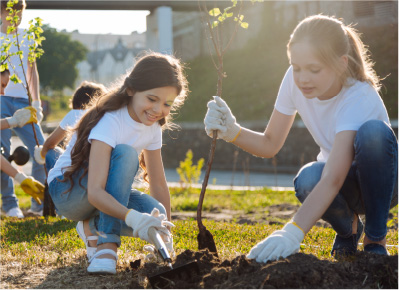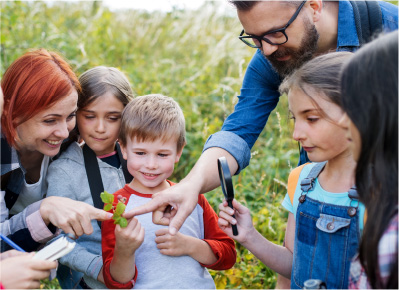Fostering Resilience: How Marginalized Youth Overcome Adversity
Publish Date: July 25, 2025, 0:00
Resilience is not something you’re born with—it’s forged through adversity, perseverance, and the right support. Marginalized youth, facing unique challenges, often discover strength in the face of hardship. In an environment where societal pressures can feel overwhelming, resilience-building programs offer a lifeline, transforming obstacles into opportunities for growth. Here, we dive into how fostering resilience empowers youth and why initiatives like those from Believe in Me are critical in paving the way for a brighter future.
A quick search on resilience reveals some burning questions: What is resilience? How do resilience-building programs benefit marginalized youth? What are examples of successful initiatives? And how can educators and nonprofit leaders get involved? We will answer these questions, backed by research from trusted sources like the American Psychological Association (APA) and HealthyChildren.org, while highlighting real-world success stories from Believe in Me.
Overview: Empowering Marginalized Youth Through Resilience-Building Programs
Resilience, defined as the capacity to recover quickly from difficulties, is a critical skill for young people facing adversity. It involves adapting positively in the wake of trauma, setbacks, or uncertainty. For marginalized youth, who often encounter systemic challenges and social exclusion, resilience-building programs are more than support networks—they are essential life tools.
Research highlights that resilience is not a static trait; it’s a dynamic process that can be developed. As noted by the APA, resilience encompasses behaviors, thoughts, and actions that can be learned and nurtured (APA, 2023). Programs focused on fostering resilience typically incorporate mentorship, skills-building workshops, and community support initiatives. By targeting these areas, educators and nonprofit leaders can offer marginalized youth avenues for personal growth and empowerment.
Believe in Me is at the forefront of implementing programs that not only nurture resilience but also encourage marginalized youth to thrive despite adversity. Their comprehensive approach addresses both emotional and practical needs, ensuring that each participant is equipped to overcome the challenges they face.
Frequently Asked Questions Answered
- What is resilience?
Resilience is the ability to bounce back from stress, adversity, failure, or even trauma. It’s about developing coping strategies and a mindset that transforms challenges into opportunities. - How do resilience-building programs benefit marginalized youth?
These programs provide essential support—ranging from mentorship to skill development—that empowers youth to navigate and overcome both personal and systemic challenges. - Can you give examples of successful resilience programs?
Yes. Many community-based initiatives, like those organized by Believe in Me, demonstrate tangible outcomes by turning adversity into success through structured resilience training. - How can educators and nonprofit leaders get involved?
From volunteering and partnering with existing programs to donating resources, there are concrete ways to contribute to resilience-building efforts.
Case Studies of Successful Resilience-Building Programs
Nothing communicates the power of resilience-building better than real-world examples. Believe in Me has successfully implemented programs that empower marginalized youth, turning obstacles into stepping stones for success.
Case Study 1: The Empowerment Mentorship Initiative
The Empowerment Mentorship Initiative is a flagship program by Believe in Me. In this initiative, young people who have experienced systemic neglect are paired with experienced mentors from various sectors. One standout success story features Jordan, a once-struggling student who found personal strength and direction through a mentor skilled in conflict resolution and career guidance. Jordan’s journey, from self-doubt to community advocacy, embodies the transformative potential of deliberately fostering resilience.
Case Study 2: Resilience Through Creative Expression Workshops
Another innovative program is the Resilience Through Creative Expression Workshops. This initiative leverages art, music, and storytelling to provide marginalized youth with a safe space to process their experiences and express themselves. By engaging in creative activities, participants not only develop coping mechanisms but also gain self-confidence and a sense of belonging. This program has shown that when youth are given the tools to articulate their struggles, they can reframe their narratives and build a new path forward.
The Role of Resilience in Community Development
The benefits of fostering resilience extend well beyond the individual. When marginalized youth develop resilience, they become active, contributing members of their communities. This transformation is crucial in driving broader social change. Resilient individuals are more likely to take on leadership roles, support community initiatives, and help cultivate safe, empathetic environments within their neighborhoods.
Community resilience is often cited as a key component of public health and safety. As outlined by HealthyChildren.org, strong community networks and support systems can significantly improve youth outcomes (HealthyChildren.org, 2023). When resilience-building programs take root, communities see reduced rates of crime, improved academic performance, and a richer cultural tapestry, all of which contribute to a healthier, safer society.
Believe in Me’s community-driven projects demonstrate firsthand how nurturing resilience ignites a ripple effect of positive change. Local partnerships, school initiatives, and public forums have all benefited from the energy of youth who have learned to overcome adversity and build bridges in their communities.
Actionable Ways to Get Involved and Support Resilience-Building Programs
If you’re stirred by these stories and want to support the cause, here are some actionable steps to help marginalized youth develop resilience in the face of adversity:
- Donate: Financial contributions help sustain and expand crucial programs. Even a small donation can make a big difference by funding mentorship, workshops, and safe spaces.
- Volunteer: Offer your time and skills by serving as a mentor or workshop facilitator. Your real-world experience can inspire and guide young people as they learn to navigate challenges.
- Advocate: Spread the word on social media, in community centers, or through local media outlets. Highlight the importance of resilience-building initiatives and encourage community participation.
- Collaborate: If you’re part of an educational institution or nonprofit, consider partnering with Believe in Me to expand the reach and scope of resilience programs in your area.
These actions not only help individual youth but ultimately strengthen the fabric of our communities. Together, we can turn adversity into opportunity, creating a cycle where every setback becomes a setup for a future success story.
Conclusion: Empowering Youth to Overcome Adversity
Fostering resilience is a critical strategy in helping marginalized youth overcome adversity. With the proper support systems in place, young people can transform challenges into life-changing opportunities. Through resilience-building programs, individuals not only gain essential skills but also contribute to healthier, more vibrant communities.
Believe in Me’s groundbreaking work in developing and nurturing these programs is a testament to how collective action, empathy, and strong support networks can change lives. Whether through mentorship, creative expression, or direct community involvement, every effort counts in teaching youth to be resilient.
As you reflect on these insights, consider what role you can play—be it through donating, volunteering, or simply sharing these powerful stories. Embrace the movement, support resilience-building initiatives, and help shape a future where every young person has the opportunity to overcome adversity and thrive.
Citations: American Psychological Association. “Building Your Resilience.” APA, 2023; HealthyChildren. “Resilience: Helping Children Cope with Challenges.” HealthyChildren.org, 2023.
Get to know more about Believe in Me and Help a Kid Today
References
American Psychological Association. “Building Your Resilience.” APA, 2023; HealthyChildren. “Resilience: Helping Children Cope with Challenges.” HealthyChildren.org, 2023.






